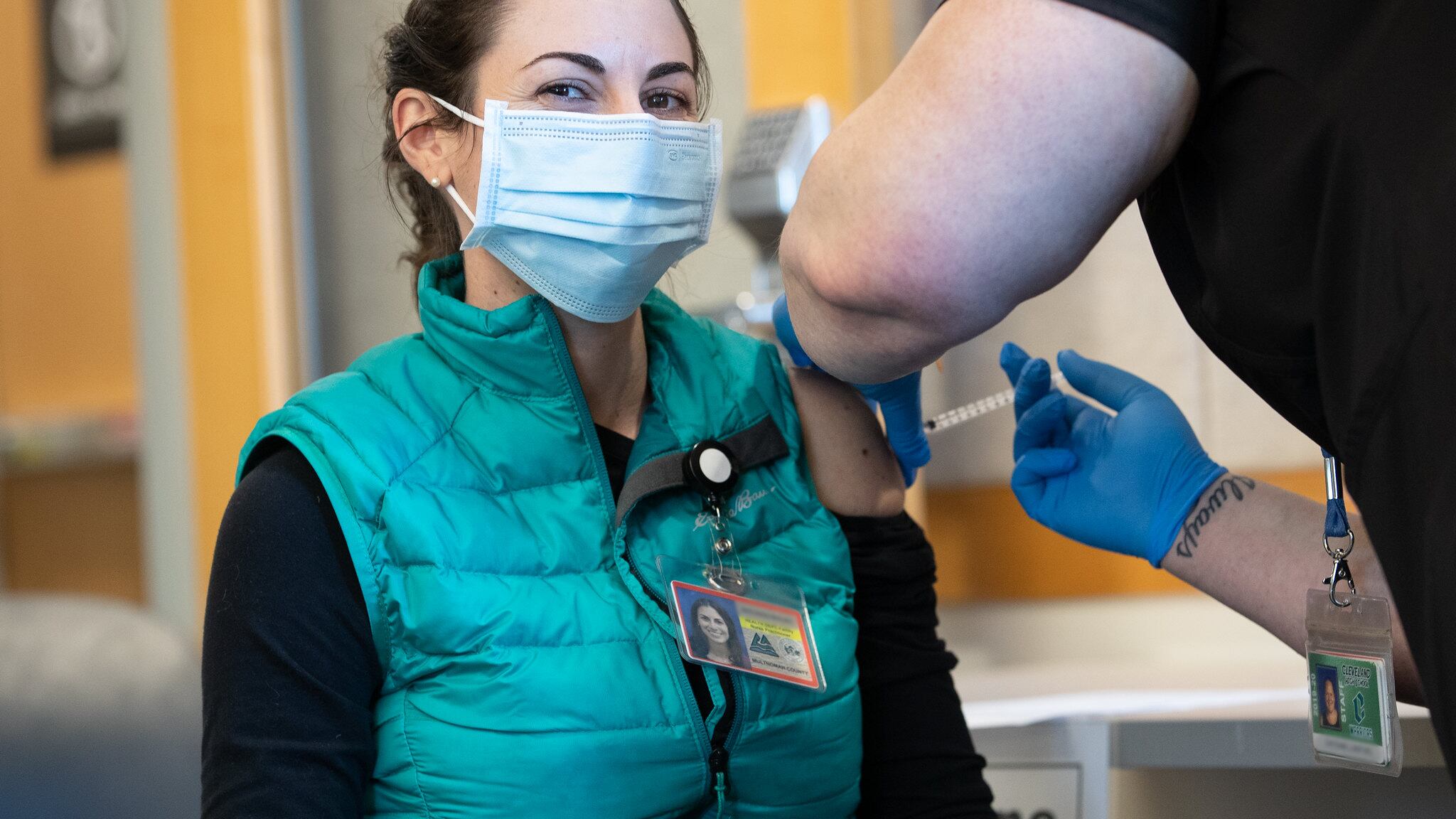Oregon is doing a better job of vaccinating its population than California or Washington, according to national data compiled by Bloomberg News, and it's doing better than the average state as well. The numbers show Oregon has vaccinated a higher percentage of its population than both of those neighboring states and has used a higher percentage of the vaccines it has been given.
That's a welcome catch-up from the early weeks of vaccinations. when Oregon languished at near the bottom of national rankings.
The improvement comes at a time when case counts overall in the state are in a downtrend, one that the Oregon Health Authority said in a Jan. 29 briefing it expects—cautiously—to continue, if Oregonians continue to practice social distancing and wear masks.
"As of Jan. 13, our statewide reproductive rate was 0.81," the agency said. "That means that each case of COVID-19 is being spread to less than one other person.
"According to the newest forecast, if we continue on our present course of wearing masks, keeping physical distance and restricting our gathering sizes, daily COVID-19 cases will decline to an average of 420 per day, and COVID-19-related hospitalizations will decrease by 13 per day." (On Saturday, OHA announced 707 new cases and 19 new deaths.)
The improvements come amid some controversy—OHA this week unaccountably stopped providing demographic detail about the deaths before pressure from The Oregonian forced the agency to reverse itself—and criticism over Gov. Kate Brown's decision to prioritize teachers over senior citizens continues.
One eye-catching statistic from the OHA dashboard on who is getting vaccinated: Women are getting the shot at about twice the rate as men are.

That is interesting because prior to the release of vaccines, national polling showed that women were more hesitant than men about getting shots.
There are slightly more women than men in Oregon (50.4% to 49.6%), but the explanation for the discrepancy appears to be that far more women than men work in health care: U.S. Census data shows about 76% of health care workers nationally are women.

